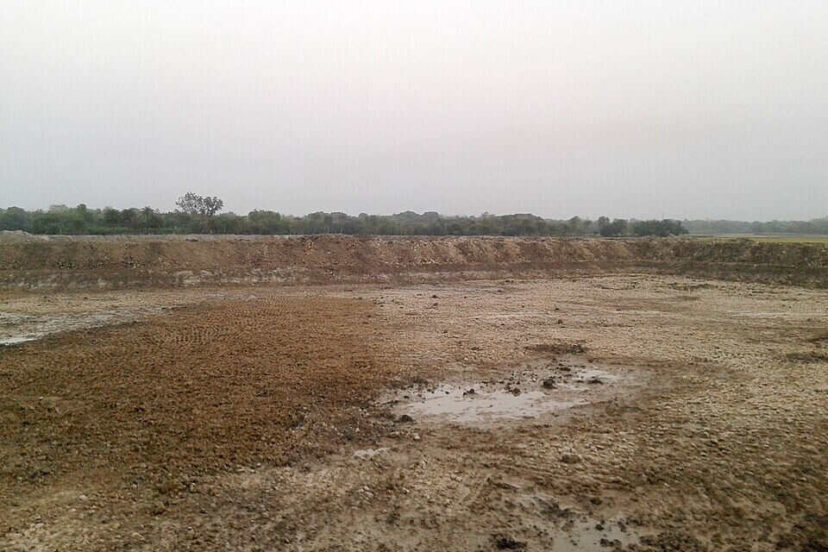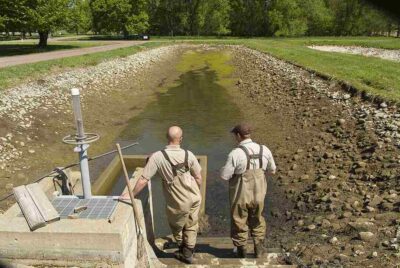How Much Does It Cost to Dig a Pond
Understanding the financial implications of digging a pond is crucial before embarking on such a project. This comprehensive guide provides insights into the various factors that influence the overall cost of excavating a pond. Here, we will delve into the specifics of the primary keyword-how much does it cost to dig a pond?
The Scope of Pond Excavation
Creating a water body, be it a small backyard pond or a sizable fishing pond, not only amplifies the aesthetic appeal of your property but also provides a serene spot for relaxation and leisure activities.
The expense of excavating a pond is influenced by numerous aspects, such as the location, size, type of soil, budget, quality of work, and market rates. Depending on these factors, the cost of digging a pond can fluctuate significantly.
Cost Determinants of Pond Excavation
Location of the Pond
The site where you aim to dig the pond plays a pivotal role in deciding the cost. A preliminary inspection of the site, its geography, and other related conditions is crucial before initiating the construction.
Soil Type
The type of soil at the location can significantly impact the excavation cost. The cost varies depending on the soil type, the breadth, and height of the pond. Smaller fishing ponds could also be quite expensive as they require the same excavation technique as larger ones.
Budget
Constructing a pond or a lake can be a costly affair. It demands meticulous planning and consideration of numerous details. Ensuring adequate funding to complete the project is paramount.
Quality of Work
The quality of work desired is another crucial factor that influences the expense of establishing a fishing pond. The higher the quality of work desired, the more will be the cost. The market offers a wide variety of materials, and the choice depends on the individual’s preference.
Market Rates
The cost per square foot for building ponds can vary based on location. For instance, prices in commercial districts will be higher, whereas in smaller towns, it will be more competitive.
Dimensions of the Pond
The size and depth of the pond also contribute to the overall cost. Smaller fishing ponds could be quite expensive as the procedure to dig a pond remains the same but in a smaller area.
Factors that Influence the Cost of Digging a Fishing Pond
Building a Dam
After evaluating the necessary criteria, the actual construction begins. If the pond design is flawed, the ground around it needs to be banked or dammed to prevent water leakage, else, the pond has to be rebuilt.
Hand Digging vs. Using an Excavator
Digging a pond by hand can save a significant amount of money. For smaller ponds, one might consider renting a mini digger. For larger ponds or soil that is difficult to dig, an excavator with an operator is recommended.
Varieties of Fishing Ponds
The overall cost of constructing and excavating a backyard fishing pond ranges from $3500 to $50000. It varies based on the quality of the pond. Fishing ponds are designed with your hatchery in mind. Backyard fishing ponds come in a variety of styles:
- Backyard Fishing Pond
- Farm Fishing Ponds
Tools and Equipment Required for Pond Construction
- Bricks and rocks for underlayment
- Pump for Pond Liners
- Fittings and Pipes for Filters
- Finishing Material for Pond Edge
Optimal Depth for a Pond
Ponds are captivating aquatic features that bring tranquility and natural beauty to any landscape. Whether you are planning to build a new pond or renovating an existing one, understanding the optimal depth for a pond is crucial for creating a thriving ecosystem. This article aims to provide valuable insights into the various factors that influence pond depth, the benefits of different depths, and the essential considerations for maintaining a balanced and healthy pond environment.
The Importance of Pond Depth – (How Much Does It Cost to Dig a Pond)
Pond depth plays a vital role in establishing a sustainable and thriving aquatic ecosystem. It directly affects water quality, temperature regulation, nutrient cycling, and the overall health of the pond’s inhabitants. Understanding the optimal depth is crucial for achieving a harmonious balance between aquatic plants, fish, and other organisms.
Factors Influencing Pond Depth – (How Much Does It Cost to Dig a Pond)
Several factors should be considered when determining the optimal depth for a pond:
a. Climate and Weather Conditions: The local climate affects water temperature fluctuations and evaporation rates, which can impact pond depth requirements.
b. Purpose of the Pond: Whether the pond is intended for ornamental purposes, fishkeeping, wildlife habitat, or a combination thereof will influence the ideal depth. Different species have specific depth preferences.
c. Slope and Topography: The natural contours and slope of the land where the pond is located will affect its depth. Flat areas may require additional excavation to achieve the desired depth.
d. Aquatic Plant Selection: The types of plants you wish to incorporate into your pond also influence its depth. Some plants thrive in shallow water, while others prefer deeper sections.
Benefits of Different Pond Depths – (How Much Does It Cost to Dig a Pond)
Different pond depths offer distinct advantages, depending on your goals and the intended use of the pond:
a. Shallow Ponds (12-18 inches): Shallow ponds are ideal for creating a wetland habitat, attracting a variety of birds, amphibians, and insects. They provide a shallow shelf for aquatic plants and are aesthetically pleasing for small-scale water features.
b. Medium-depth Ponds (18-36 inches): These depths are suitable for a diverse range of aquatic plants and fish species. They offer sufficient space for plant root systems and provide better temperature stability than shallow ponds.
c. Deep Ponds (3-6 feet): Deep ponds provide thermal refuge for fish during extreme temperatures, preventing rapid temperature fluctuations. They also support a wider variety of fish species and can accommodate larger, more active aquatic organisms.
Considerations for Maintaining a Balanced Pond Ecosystem
To ensure a healthy and balanced pond ecosystem, the following factors should be considered:
a. Oxygenation: Adequate oxygen levels are vital for the survival of fish and other aquatic organisms. Consider incorporating aeration systems or water features that promote oxygen exchange.
b. Filtration and Circulation: Proper filtration systems, such as mechanical and biological filters, help remove debris and maintain water clarity. Circulation systems prevent stagnation and distribute oxygen throughout the pond.
c. Water Quality Management: Regular monitoring of water quality parameters (pH, ammonia, nitrate, etc.) is essential to prevent imbalances and ensure a healthy environment for aquatic life. Testing kits and appropriate corrective measures should be employed.
d. Algae Control: Excessive algae growth can disrupt the ecological balance of a pond. Implementing algae control measures such as aquatic plants, UV sterilizers, or algaecides can help manage algae populations.
Cost to Excavate a Fish Pond
The cost of establishing a fishing pond depends on the pond’s size, depth, quality, and design. The cost increases with the installation of more equipment such as a heater or aerators.
Average Cost to Excavate & Construct a Pond
The cost to build a pond is $2.50 to $9.00 per square foot or $2,900 to $15,600 on average. Digging a large pond costs $1.50 to $4.00 per cubic yard.
Constructing a Pond in Steps
- Site Selection
- Obtain Government Approval
- Hire Excavator Operators
- Damming
- Lining Material
- Water inlet and outlet sources
- Setup Equipment
Conclusion – (How Much Does It Cost to Dig a Pond)
Understanding the cost implications of digging a pond is essential before starting the project. The expense is influenced by various factors like location, size, soil type, quality of work, and market rates. The cost of pond excavation can vary significantly depending on these factors.
Frequently Asked Questions – (How Much Does It Cost to Dig a Pond)
Q: What are the key factors that determine the cost of digging a pond?
A: The cost of digging a pond is determined by various factors such as the site of the pond, soil type, budget, the quality of work desired, market rates, and the size and depth of the pond.
Q: What is the optimal depth for a fishing pond?
A fishing pond should be deep enough to support aquatic life and a diverse fish population. It also depends on the soil type of the location. To ensure plant and fish growth, a pond should be at least 2 feet deep.
Q: What are the different types of fishing ponds?
A: The two main types of fishing ponds are backyard fishing ponds and farm fishing ponds.
Q: What tools and equipment are needed to construct a pond?
A: The construction of a pond requires bricks and rocks for underlayment, a pump for pond liners, fittings and pipes for filters, and finishing material for the pond edge.
Q: How much does it cost to dig a fishing pond?
A: The cost of establishing a fishing pond is determined by the pond’s size, depth, quality, and design. As more equipment is installed, such as a heater or aerators, the prices will rise.




